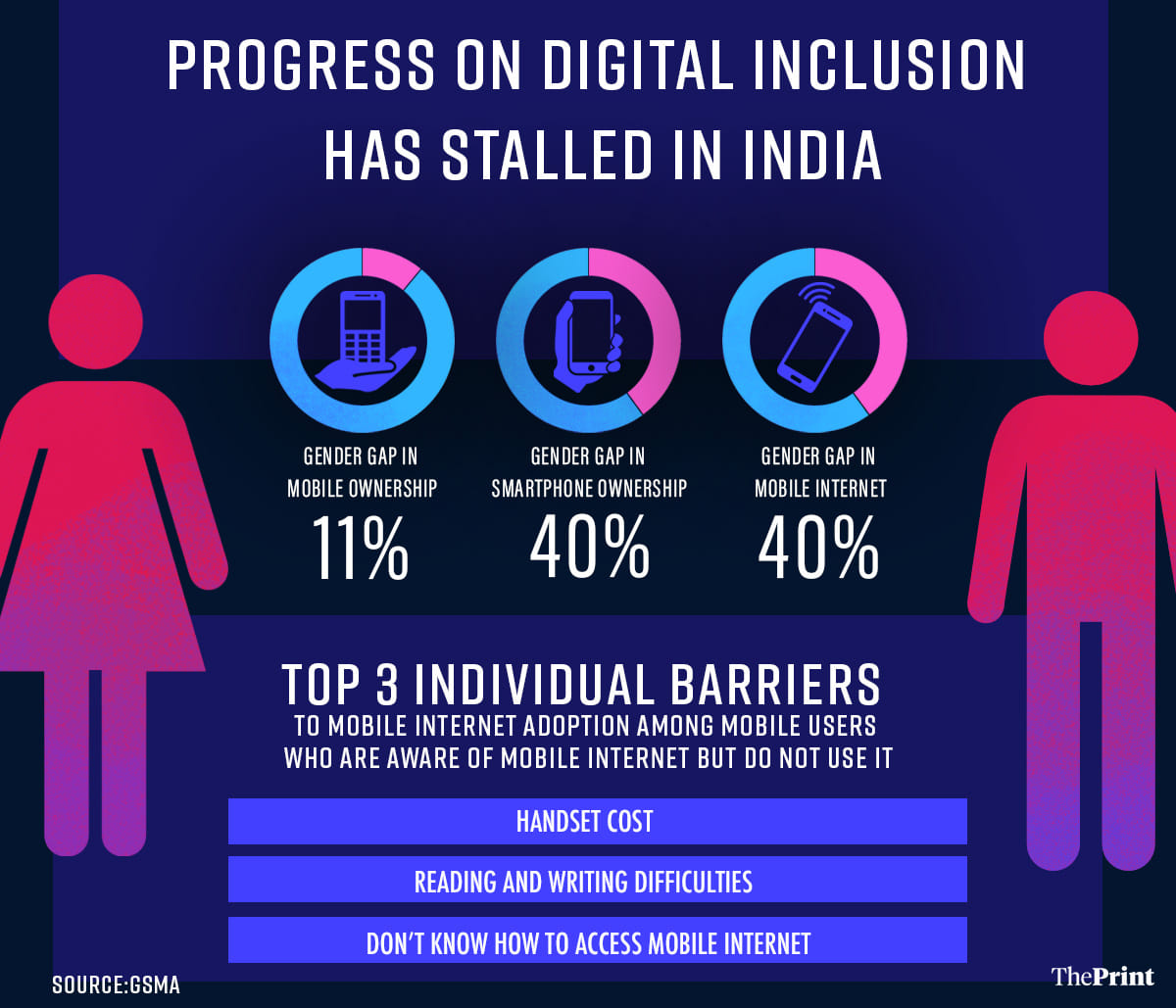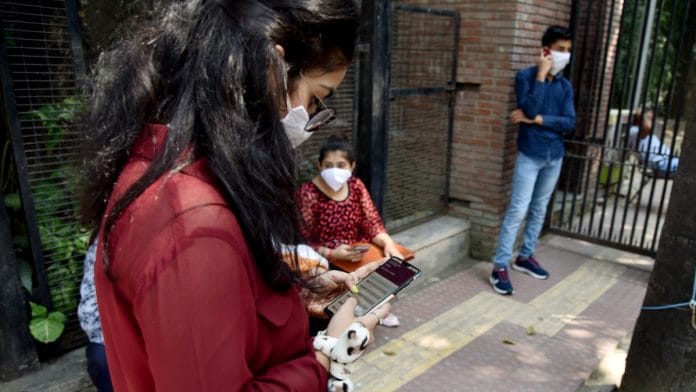New Delhi: India’s progress on digital inclusion has stalled yet again, said a new report released Wednesday, which found that women in the country are 40 per cent less likely than men to own a mobile phone and use mobile internet.
According to the Mobile Gender Gap Report 2023, compiled by global not-for-profit telecom body GSMA, the gender gap in mobile internet usage in India stood at 40 per cent in 2022, as against 41 per cent in 2021.
The report defined use of mobile internet as an individual having used the internet on a mobile phone at least once in the last three months prior to being surveyed, while the gender gap in mobile internet usage denoted how less likely a woman is to use mobile internet than a man.

“The gender gap in mobile internet use in South Asia, and across low- and middle-income countries overall, is largely driven by India – with a population of 1.4 billion people, that has seen significant changes in its mobile internet gender gap over the past few years,” read the report.
It noted that this gap narrowed from 68 per cent in 2017, to 56 per cent in 2018, 50 per cent in 2019, and 33 per cent in 2020, due to changing market dynamics, more affordable handsets and a notable increase in women’s adoption during the onset of Covid-19 restrictions and lockdowns.
“However, in 2021, this trend reversed when men’s adoption of mobile internet increased while women’s remained unchanged,” it said, adding that “latest data shows that progress has stalled again, with no change in mobile internet use for either men or women”.
The report said this was likely a result of supply chain disruptions since the onset of the pandemic, a slowing economy and increased inflation, among other factors, which made accessing the internet less affordable and accessible for people in India in general, but especially for women.
For this study, GSMA surveyed a total of 12 countries, namely Egypt, Ethiopia, Ghana, Kenya, Nigeria, Senegal in Africa, Bangladesh, Pakistan, India and Indonesia in Asia, and Guatemala and Mexico in Latin America.
The sample size in each country comprised approximately 1,000 male and female adults, with the exception of India where the sample was approximately 2,000.
‘Mobile internet awareness low in India’
The report further added that the type of mobile phone one owns also has an impact on whether and how they use mobile internet. For example, smartphone owners are significantly more likely to be aware of and use mobile internet regularly.
Once women own a smartphone, their levels of internet awareness and usage are almost on par with men, the report said.
The gender gap in mobile ownership in India stood at 11 per cent in 2022.
According to the report, 91 per cent of men who own an internet-enabled phone in India use the internet, while for women, this figure stood at 79 per cent.
Additionally, while most mobile internet users have their own internet-enabled phone, in some countries, a notable proportion of people who use mobile internet, especially women, do not own a mobile phone or only own a basic phone, the report noted.
“This means they are accessing the internet on someone else’s device…in India, 19 per cent of female mobile internet users are only accessing it on someone else’s device compared to 8 per cent of men,” it said.
The report added that to ensure women and men in India have the opportunity to use mobile internet, it is critical to understand the barriers preventing them from doing so.
“Mobile internet awareness is particularly low in India and, despite an increase among women from 51 per cent in 2021 to 58 per cent in 2022, it is still lower than almost all other survey countries.”
Interestingly, of those in India who said they did not use mobile internet, 57 per cent of men and 61 per cent of women did not even know it exists.
Once male and female mobile users are made aware of mobile internet, the top barriers preventing them from using it are similar, such as lack of basic literacy and not knowing how to access the internet on a mobile phone. Affordability of internet-enabled handsets was the second-most reported barrier for both male and female respondents.
“This barrier is likely to have been felt more acutely in 2022 as the lasting economic effects of the pandemic and rising unemployment and inflation have made smartphones less affordable in India.” the report said.
It added that women’s digital inclusion is also impacted by social norms that limit their access to, and use of, mobile phones and that addressing these norms is also key to increasing women’s mobile internet adoption.
(Edited by Amrtansh Arora)
Also Read: One-third of Indian mobile phone users likely to be on 5G by March 2025: CRISIL Ratings






